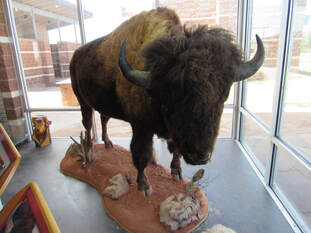 I’m a fan of Tom Hanks. I’ve seen most of his films and I just love the actor. His ability to make his characters believable and authentic is unsurpassed. Lately, I’ve been watching the movie, News of the World. It’s the story of Jefferson Kyle Kidd, the owner of a newspaper printing business in San Antonio. He left to fight in the Civil War, and while he was gone, his beloved wife died of cholera. Set adrift by losing both his wife and his printing business, as well as the atrocities he witnessed in the war, he now rides town to town reading selections from local and national newspapers to audiences who don’t have the time to read or cannot read for themselves. Traveling after a reading in Wichita Falls, Texas, Kidd finds a young German girl who was kidnapped several years before by the Kiowa, speaks no English, and is being returned to her extended family in Castroville, a town near San Antonio. The man taking her was hung by vigilantes, so it falls to Kidd to take her on to her family. The situation forces him to confront his losses, as well as the emptiness in his life that he has refused to fill. I’ve watched the film several times, absorbed with how life in 1870 is authentically and brutally portrayed. It’s also fun to recognize the background in the various scenes because the film was shot on a movie ranch south of Santa Fe. It was filmed, in fact, where the recent accidental shooting of a cinematographer occurred. There is an incident in the film that takes place in “Erath County” and concerns the deplorable conditions of an encampment of buffalo hunters who kill buffalo, skin off the hides, bundle them, and then ship them back east to the hide markets. Erath County exists, roughly between Ft. Worth and San Antonio, while the encampment is similar to a historical encampment that was located farther northwest from Erath County, a hundred miles or so east of Lubbock, near the Double Mountain Fork of the Brazos River. There were nominally three great regions of buffalo: the northern herds north of the Platte River in Nebraska, the central herds in Kansas, Nebraska, and eastern Colorado, and the great southern herds in eastern New Mexico, Texas, and western Oklahoma. They ranged outside those areas, from Mexico to Canada, but the majority were found on the Great Plains. They numbered between 70 and 80 million at the beginning of the 19th century, but by the beginning of the 20th century, only a few hundred remained. Why were so many animals killed in such a short time? I thought it was linked to the increased access that railroads gave to the Great Plains. There’s an iconic painting showing gunmen on top of train cars, shooting buffalo at their leisure, and I remember the boast of one shooter who had killed a thousand in a single day. There was also the desire of railroad owners to keep the herds away from the tracks. The dividing of the buffalo habitat by the railroads and the towns that followed them, caused considerable losses from the disruption of migration routes, as did the prevalent use of barbed wire to section off property. And it’s probably true that the Army decimated the buffalo at every turn so that the Plains Indians would lose their primary source of living. I’m not sure what the numbers are in each of those cases, but I found another reason that has some frightening numbers when it comes to the disappearance of the buffalo. In 1871, an English firm using buffalo hides to produce winter coats, robes, and rugs wanted to develop new processes for handling hides. They ordered 500 hides from Kansas for experimentation. More economical ways to tan hides were developed, and one firm in Philadelphia ordered 2000 hides, paying $3.50 each. Other tanneries, including some in England and Germany, began regular orders. Money was a big motivator and the big hunt was on. It consumed Kansas first and then spilled over into southern Nebraska and eastern Colorado. Within three years, aided by new railroad lines, hunters and shooters had destroyed the central herds for their hides. In 1873, with some of the Indian tribes being sent to reservations, buffalo hunters seized the opportunity to enter the Texas Panhandle. By the Second Battle of Adobe Walls in 1874, there may have been as many as fifty buffalo hunting outfits working in the Panhandle. Two years later, in 1876, a man named Charles Rath joined with a succession of different traders to increase his mercantile operation based in Dodge City, Kansas. He had, by the way, provided the Adobe Walls trading post with equipment and supplies in 1874, eight weeks before the attack. He established other trading centers in Texas, then, following the burgeoning hide business, he moved from Dodge City to a small town that he himself had established, named Rath City, a few miles below the Brazos River. This sounds like the encampment in the Tom Hanks movie. At its height in the winter of 1877-78, Rath City “consisted of some half a dozen adobe and cedar buildings…[that included] the main store, a magazine house, [Jim] Hopkins restaurant and hotel, George Aiken’s saloon and dance hall, Smokey Thompson’s wagon-yard, Charlie Sing’s laundry,…a barber shop and a blacksmith shop.” It became well known that next to owning a cattle ranch, buffalo hunting was the most profitable enterprise on the frontier. Perhaps as many as 4,000 men (hunters, skinners, buyers, teamsters) sought hides across the West Texas country, many of them trading at Rath City when they came in to buy supplies. Charles Rath and his partners worked to keep prices low ($2.00 per bull hide, less for female hides) and in the two-month period from December 1877 through January 1878, bought and sold perhaps 20,000 hides. Before the place shut down in 1879, some 1.1 million hides had passed through the town, most handled by Rath’s store. Considering the number of other “hide towns” that had been created, included Buffalo Gap south of Abilene, Deep Creek at modern Snyder, and even Fort Concho, in present day San Angelo, buffalo hunting was no incidental occupation by a few hunters—it was an aggressive industry managed for profit that was responsible for the slaughter of millions of buffalo. By 1877, Dodge City was on its way to becoming a major shipping point for moving cattle to northern markets, and the buffalo-hide business was becoming less important. Different markets were developed and centralized distribution centers were changed, but it was mainly the decrease in the number of buffalo available to be killed that put the industry on the decline. In early February of 1877, an increasing number of Comanche Indians escaped the reservations in Oklahoma and returned to the Palo Duro canyonlands and the Llano Estacado of Texas. Several attacks took place, destroying camp equipment, stealing horses and mules, and killing the hated hunters, and then escalated into raids in the Rolling Plains area around the Wichita, Pease, Brazos, and Concho rivers. By 1878, it was not safe for hunters on the prairie, or even in Rath City. For most hide men, the big hunt was over. With the aggressive settlement of the Texas Panhandle and the creation of large cattle ranches, the decade after 1870 decreased the herds to the point that they could never recover. This information was mostly sourced from The Buffalo Soldier Tragedy of 1877, by Paul H. Carlson, 2003.
2 Comments
11/1/2021 07:59:51 am
Hey Donald: I just read that the 80,000 acre Turkey Creek Ranch close to Borger, along the Canadian River, has just gone up for sale. $200M will buy you a piece of Panhandle (and buffalo) history.
Reply
Leave a Reply. |
AuthorDon Willerton has been a reader all his life and yearns to write words like the authors he has read. He's working hard at it and invites others to share their experiences. |

 RSS Feed
RSS Feed